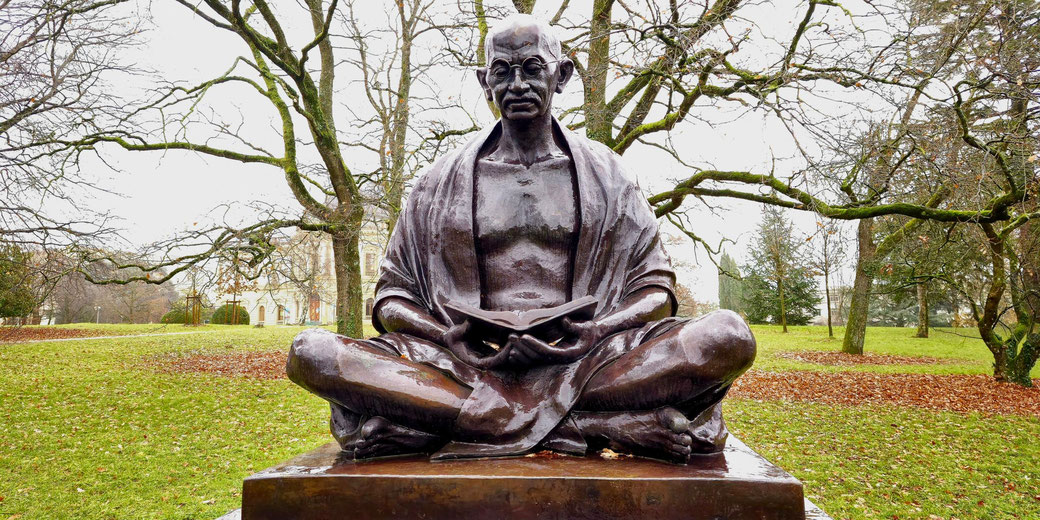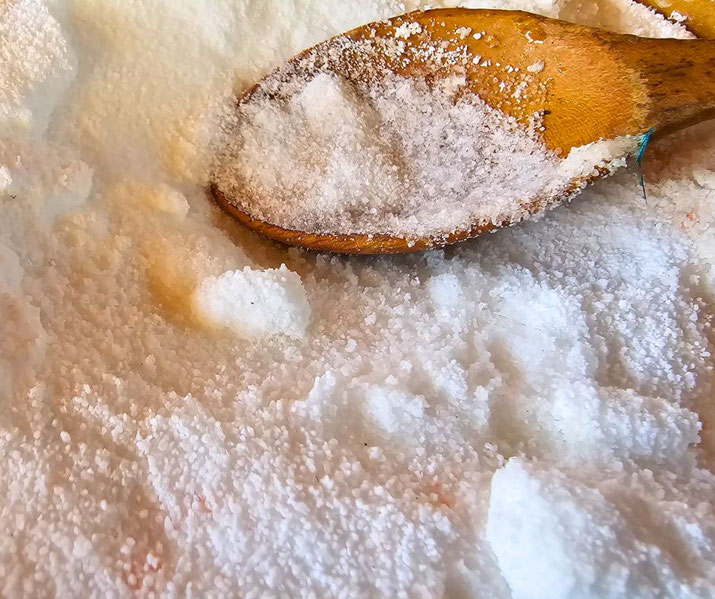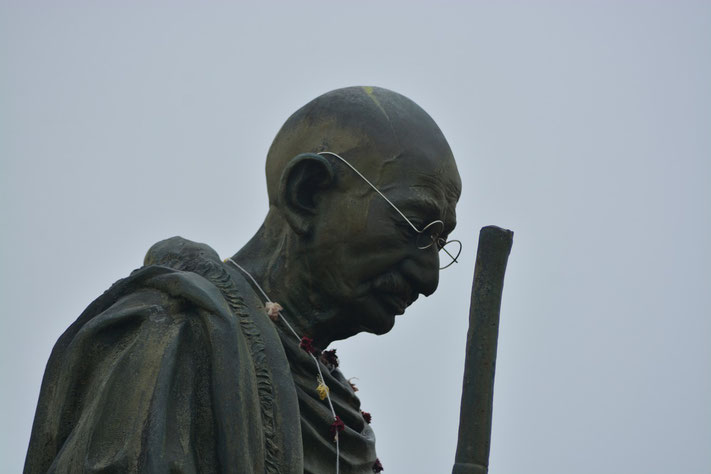How Gandhi's non-violent Salt March shook the British Empire

The Salt March, also known as the Dandi March and the Satyagraha March, was a protest led by Mahatma Gandhi against British rule in India.
On March 12, 1930, Gandhi and his followers began walking from Sabarmati Ashram to the seacoast town of Dandi, Gujarat.
They were protesting the British monopoly on salt production in India, which caused high prices and poor-quality salt for Indian consumers.
The Salt March was one of Gandhi's most famous protests, and it helped galvanise support for independence from British rule.
What led to the Salt March?
The British Raj controlled India from 1858 to 1947. India was referred to as the ‘Jewel in the Crown’ of the British Empire because it was so economically valuable.
The British had complete control over India’s resources and exploited them for their own benefit.
The most important agricultural resources that India produced included cotton, jute, wheat and rice.
These resources were essential for Britain’s textile industry which was the backbone of the British economy.
India was also a major market for British manufactured goods such as iron and steel products, locomotives, machine tools and cloth.
In addition, they imposed high taxes on the Indian people, which made everyday items like salt very expensive.
Salt was an essential commodity in India, not only for dietary use but also for preserving food, especially in a tropical climate.
This tax was especially burdensome for poor Indians, who could not afford to buy expensive, imported salt.
Political movements within India
The Indian National Congress was created in 1885 to fight for India’s independence from British rule.
Gandhi joined the Congress in 1915 and quickly rose to positions of leadership. He became the president of it for a short time in 1924.
By this stage he was well-known for his philosophy of nonviolent resistance, which he called satyagraha.
Gandhi, along with the National Congress, wanted something called swaraj. The term swaraj refers to self-government in India.
Mahatma Gandhi and the Indian National Congress strove for independence for India from British imperial rule in the 20th century, during which time the term swaraj became particularly significant to him.
Before the Salt March, Gandhi had already gained a reputation as an effective leader of protests against British rule.
In 1919, he led a successful campaign of civil disobedience against the Rowlatt Acts, which allowed the British government to jail people without trial.
What was the Satyagraha?
Gandhi’s non-cooperation movement based upon the concept of satyagraha, or 'truth force' was the best way to achieve independence from British rule.
He believed that violence would only lead to more violence, and that by using nonviolent methods, Indians could force the British to leave India peacefully.
The idea of swadeshi was one of the methods that Gandhi used to promote economic non-cooperation.
In general, it called for Indians to make their own goods (or buy domestically produced goods) and refuse imports.
In 1922, he was arrested for his role in the Non-Cooperation Movement
He spent nine months in jail but was released after an outcry from the Indian public.
The Salt March begins
In 1930, Gandhi decided to lead a protest against the British monopoly on salt production in India.
He believed that this would be an effective way to unite the people of India against British rule.
Under the Salt Acts passed by the British government, it was illegal for Indians to produce or sell salt.
The British had complete power over the extraction of salt in India due to the 1882 Salt Act.
Because of this legislation, Indians were forced to pay taxes on salt and risked severe criminal penalties if they did not comply.
This particularly affected the poorest Indians.

The Salt March began on March 12, 1930, with Gandhi and 78 followers walking from Sabarmati Ashram to the village of Dandi on the coast of Gujarat.
The march lasted for 24 days, during which time Gandhi and his followers covered over 240 miles (390 kilometers) on foot.
Along the way, they were joined by thousands of Indians who were inspired by the movement.
During the Salt March, Mahatma Gandhi utilised the local and worldwide media (including The New York Times and Time Magazine) to his advantage.
For example, in order to build interest in the protest and put pressure on the British, he granted interviews to foreign journalists along the route of the march.
On April 6th, they reached Dandi, by which time tens of thousands of Indians had joined the march.
They then proceeded to make their own salt by evaporating seawater.
This act of civil disobedience against the British authorities was widely publicised and helped to inspire other protests against colonial rule.
Finally, he encouraged his supporters and others across India to ignore the salt laws and gather their own.
What were the outcomes of the march?
For his actions during the Salt March, international news organisations produced profiles on Gandhi and the Indian independence movement. Time Magazine named Gandhi 'Man of the Year' in 1930.
In the days and weeks after Gandhi's Salt March, millions of Indians began to defy salt regulations.
Some individuals collected their own salt, whereas others purchased it illegally. The British reacted violently, jailing over 60,000 people in the month following the Salt March.
On May 5th, 1930, the British arrested and imprisoned Mahatma Gandhi. They charged him with organising demonstrations and encouraging civil unrest.
The British wanted to impede or stop the protests by arresting Gandhi, but it failed; his supporters continued the fight.
It triggered a broader Civil Disobedience Movement, which saw Indians refusing to pay taxes, attend British schools, and comply with other colonial laws.
The dramatic scenes at the Dharasana Salt Works
On May 21, 1930, Gandhi's followers attempted to raid the Dharasana Salt Works. Since Gandhi had been arrested on May 5th, and he was no longer able to take part in the demonstrations.
However, under the leadership of Indian poet and political activist Sarojini Naidu, a group of 2,500 supporters walked up to the gates of the Salt Works.
However, the 2,500 non-violent protestors were met with violence from the British-hired guards who were armed with steel-tipped lathis (clubs).
Over the next two hours, the guards beat hundreds of peaceful protesters.
The attack was so brutal that it was covered by international news outlets such as The New York Times and Time Magazine.
American journalist Webb Miller was an eyewitness to the event, and he wrote about it for The New York Times:
"Not one of the marchers even raised an arm to ward off the blows. They went down like ten-pins. From where I stood I heard the sickening whacks of the clubs on unprotected skulls... An injured man lay groaning on the road, too weak to move under his own power. A woman was being helped away, her face streaming with blood from a deep gash in her forehead."
The Dharasana Salt Works raid resulted in international condemnation of the British authorities in India.
The violent response by the British only served to further Gandhi's cause and rally more support for Indian independence.
Following the overwhelming negative response to the treatment of the non-violent protestors, the British authorities eventually released Gandhi from prison in January 1931.
Then, in March 1931, after months of negotiations, Gandhi and Viceroy Lord Irwin signed the Gandhi-Irwin Pact, which ended the civil disobedience movement and resulted in the release of thousands of imprisoned Indians.
Why is the Salt March still important today?
The legacy of the Salt March continues to this day. In India, salt is seen as a symbol of liberty, and the anniversary of the march is still celebrated every year.
The memory of Gandhi and his protest against British rule also inspired other liberation movements around the world, including Martin Luther King in the American Civil Rights movement.
Finally, it was a significant step in the Indian independence movement and helped to solidify Gandhi's reputation as a powerful political leader.
The non-violent protest also showed the world that India was united in its quest for freedom from British rule.

What do you need help with?
Download ready-to-use digital learning resources
Copyright © History Skills 2014-2025.
Contact via email
With the exception of links to external sites, some historical sources and extracts from specific publications, all content on this website is copyrighted by History Skills. This content may not be copied, republished or redistributed without written permission from the website creator. Please use the Contact page to obtain relevant permission.





